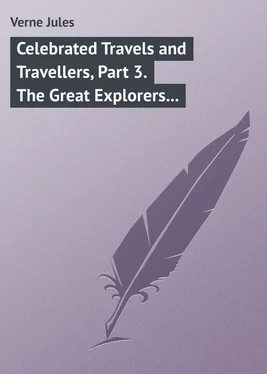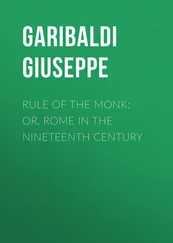Jules Verne - Celebrated Travels and Travellers, Part 3. The Great Explorers of the Nineteenth Century
Здесь есть возможность читать онлайн «Jules Verne - Celebrated Travels and Travellers, Part 3. The Great Explorers of the Nineteenth Century» — ознакомительный отрывок электронной книги совершенно бесплатно, а после прочтения отрывка купить полную версию. В некоторых случаях можно слушать аудио, скачать через торрент в формате fb2 и присутствует краткое содержание. Жанр: foreign_language, foreign_prose, на английском языке. Описание произведения, (предисловие) а так же отзывы посетителей доступны на портале библиотеки ЛибКат.
- Название:Celebrated Travels and Travellers, Part 3. The Great Explorers of the Nineteenth Century
- Автор:
- Жанр:
- Год:неизвестен
- ISBN:нет данных
- Рейтинг книги:5 / 5. Голосов: 1
-
Избранное:Добавить в избранное
- Отзывы:
-
Ваша оценка:
- 100
- 1
- 2
- 3
- 4
- 5
Celebrated Travels and Travellers, Part 3. The Great Explorers of the Nineteenth Century: краткое содержание, описание и аннотация
Предлагаем к чтению аннотацию, описание, краткое содержание или предисловие (зависит от того, что написал сам автор книги «Celebrated Travels and Travellers, Part 3. The Great Explorers of the Nineteenth Century»). Если вы не нашли необходимую информацию о книге — напишите в комментариях, мы постараемся отыскать её.
Celebrated Travels and Travellers, Part 3. The Great Explorers of the Nineteenth Century — читать онлайн ознакомительный отрывок
Ниже представлен текст книги, разбитый по страницам. Система сохранения места последней прочитанной страницы, позволяет с удобством читать онлайн бесплатно книгу «Celebrated Travels and Travellers, Part 3. The Great Explorers of the Nineteenth Century», без необходимости каждый раз заново искать на чём Вы остановились. Поставьте закладку, и сможете в любой момент перейти на страницу, на которой закончили чтение.
Интервал:
Закладка:
As might have been expected, the negotiations preceding presentation at court were long and difficult. Finally, however, all was arranged, and the reception was as cordial as diplomatic customs permitted. The king was loaded with diamonds and precious stones; he wore a magnificent crown, and the Koh-i-noor sparkled upon one of his bracelets. This is the largest diamond in existence; a drawing of it may be seen in Tavernier's Travels. 1 1 The Koh-i-noor is now in the possession of the Queen of England.
Elphinstone, after describing the ceremonies, says, – "I must admit that if certain things, especially the extraordinary richness of the royal costume, excited my astonishment, there was also much that fell below my expectations. Taking it as a whole, one saw less indication of the prosperity of a powerful state than symptoms of the decay of a monarchy which had formerly been flourishing."
The ambassador goes on to speak of the rapacity with which the king's suite quarrelled about the presents offered by the English, and gives other details which struck him unpleasantly.
Elphinstone was more agreeably impressed with the king at his second interview. He says, – "It is difficult to believe that an Eastern monarch can possess such a good manner, and so perfectly preserve his dignity while trying to please."
The plain of Peshawur, which is surrounded on all but the eastern side by high mountains, is watered by three branches of the Cabul river, which meet here, and by many smaller rivers. Hence it is singularly fertile. Plums, peaches, pears, quinces, pomegranates, dates, grow in profusion. The population, so sparsely sprinkled throughout the arid countries which the ambassador had come through, were collected here, and Lieut. Macartney counted no less than thirty-two villages.
At Peshawur there are 100,000 inhabitants, living in brick houses three stories high. Various mosques, not in any way remarkable for architecture, a fine caravanserai, and the fortified castle in which the king received the embassy, are the only buildings of importance. The varieties of races, with different costumes, present a constantly changing picture, a human kaleidoscope, which appears made especially for the astonishment of a stranger. Persians, Afghans, Kyberis, Hazaurehs, Douranis, &c., with horses, dromedaries, and Bactrian camels, afford the naturalist much both to observe and to describe respecting bipeds and quadrupeds. But the charm of this town, as of every other throughout India, is to be found in its gardens, with their abundant and fragrant flowers, especially roses.
The king's situation at this time was far from pleasant. His brother, whom he had dethroned after a popular insurrection, had now taken arms and just seized Cabul. A longer stay was impossible for the embassy. They had to return to India by way of Attock and the valley of Hussoun Abdoul, which is celebrated for its beauty. There Elphinstone was to await the result of the struggle between the brothers, which would decide the fate of the throne of Cabul, but he had received letters of recall. Moreover, fate was against Soojah, who, after being completely worsted, had been forced to seek safety in flight.
The embassy proceeded on its way, and crossed the country of the Sikhs – a rude mountain race, half-naked and semi-barbarous.
"The Sikhs, who a few years later were to make themselves terribly famous," says Elphinstone, "are tall, thin men, and very strong. Their garments consist of trousers which reach only half way down the thigh. They wear cloaks of skins which hang negligently from the shoulder. Their turbans are not large, but are very high and flattened in front. No scissors ever touch either hair or beard. Their arms are bows and arrows or muskets. Men of rank have very handsome bows, and never pay a visit without being armed with them. Almost the whole Punjab belongs to Runjeet Sing, who in 1805 was only one among many chiefs in the country. At the time of our expedition, he had acquired the sovereignty of the whole country occupied by the Sikhs, and had taken the title of king."
No incident of any moment marked the return of the embassy to Delhi. In addition to the narrative of events which had taken place before their eyes, its members brought back invaluable documents concerning the geography of Afghanistan and Cabulistan, the climate, animals, and vegetable and mineral productions of that vast country.
Elphinstone devotes several chapters of his narrative to the origin, history, government, legislation, condition of the women, language, and commerce of these countries; facts that were largely appropriated by the best informed newspapers when the recent English expedition to Afghanistan was undertaken.
His work ends with an exhaustive treatise upon the tribes who form the population of Afghanistan, and a summary of invaluable information respecting the neighbouring countries.
Elphinstone's narrative is curious, interesting, and valuable for many reasons, and may be consulted in our own day with advantage.
The zeal of the East India Company was indefatigable. One expedition had no sooner returned than another was started, with different instructions. It was highly important to be thoroughly au fait of the ever-changing Asiatic policy, and to prevent coalition between the various native tribes against the conquerors of the soil. In 1812, a new idea, and a more peaceful one, gave rise to the journey of Moorcroft and Captain Hearsay to Lake Manasarowar, in the province of the Un-dés, which is a portion of Little Thibet.
This time the object was to bring back a flock of Cashmere goats, whose long silk hair is used in the manufacture of the world-famed shawls. In addition, it was proposed to disprove the assertion of the Hindus that the source of the Ganges is beyond the Himalayas, in Lake Manasarowar. A difficult and perilous task! It was first of all necessary to penetrate into Nepaul, whilst the government of that country made such an attempt very difficult, and thence to enter a region from which the natives of Nepaul are excluded, and with still greater reason the English.
The explorers disguised themselves as Hindu pilgrims. Their suite consisted of twenty-five persons, one of whom pledged himself to walk in strides of four feet! This was certainly a rough method of ascertaining the distance traversed!
Messrs. Moorcroft and Hearsay passed through Bareilly, and followed Webb's route as far as Djosimath, which place they left on the 26th of May, 1812. They soon had to cross the last chain of the Himalayas, with increasing difficulties, owing to the rarity of the villages, which caused a scarcity of provisions and service, and the bad roads, at so great a height above the level of the sea.
Nevertheless they saw Daba, where there is an important lamasery, Gortope, Maisar; and, a quarter of a mile from Tirthapuri, curious hot springs.
The original narrative, which appeared in the "Annales des Voyages," speaks of this water as flowing from two openings six inches in diameter in a calcareous plain some three miles in extent, and which is raised in almost every direction from ten to twelve feet above the surrounding country. It is formed of the earthy deposits left by the water in cooling. The water rises four inches above the level of the plain. It is clear, and so warm that one cannot keep a hand in it longer than a few minutes. It is surrounded by a thick cloud of smoke. The water, flowing over a horizontal surface, hollows out basins of various shapes, which as they receive the earthy deposits contract again. When they are filled up, the flow of the water again hollows out a new reservoir, which in its turn becomes full. Flowing thus from one to the other, it finally reaches the plain below. The deposit left by the water is as white as the purest stucco close to the opening, a little further it becomes pale yellow, and further still saffron-coloured. At the other spring it is first rose-coloured, and then dark red. These different colours are to be found in the calcareous plain, and are no doubt the work of centuries.
Читать дальшеИнтервал:
Закладка:
Похожие книги на «Celebrated Travels and Travellers, Part 3. The Great Explorers of the Nineteenth Century»
Представляем Вашему вниманию похожие книги на «Celebrated Travels and Travellers, Part 3. The Great Explorers of the Nineteenth Century» списком для выбора. Мы отобрали схожую по названию и смыслу литературу в надежде предоставить читателям больше вариантов отыскать новые, интересные, ещё непрочитанные произведения.
Обсуждение, отзывы о книге «Celebrated Travels and Travellers, Part 3. The Great Explorers of the Nineteenth Century» и просто собственные мнения читателей. Оставьте ваши комментарии, напишите, что Вы думаете о произведении, его смысле или главных героях. Укажите что конкретно понравилось, а что нет, и почему Вы так считаете.












